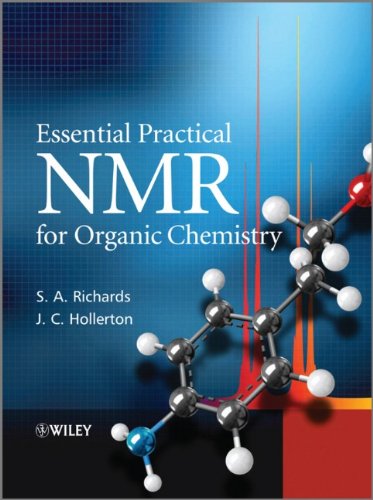

Most ebook files are in PDF format, so you can easily read them using various software such as Foxit Reader or directly on the Google Chrome browser.
Some ebook files are released by publishers in other formats such as .awz, .mobi, .epub, .fb2, etc. You may need to install specific software to read these formats on mobile/PC, such as Calibre.
Please read the tutorial at this link: https://ebookbell.com/faq
We offer FREE conversion to the popular formats you request; however, this may take some time. Therefore, right after payment, please email us, and we will try to provide the service as quickly as possible.
For some exceptional file formats or broken links (if any), please refrain from opening any disputes. Instead, email us first, and we will try to assist within a maximum of 6 hours.
EbookBell Team

0.0
0 reviewsThis book describes the use of NMR spectroscopy for dealing with problems of small organic molecule structural elucidation. It features a significant amount of vital chemical shift and coupling information but more importantly, it presents sound principles for the selection of the techniques relevant to the solving of particular types of problem, whilst stressing the importance of extracting the maximum available information from the simple 1-D proton experiment and of using this to plan subsequent experiments. Proton NMR is covered in detail, with a description of the fundamentals of the technique, the instrumentation and the data that it provides before going on to discuss optimal solvent selection and sample preparation. This is followed by a detailed study of each of the important classes of protons, breaking the spectrum up into regions (exchangeables, aromatics, heterocyclics, alkenes etc.). This is followed by consideration of the phenomena that we know can leave chemists struggling; chiral centres, restricted rotation, anisotropy, accidental equivalence, non-first-order spectra etc. Having explained the potential pitfalls that await the unwary, the book then goes on to devote chapters to the chemical techniques and the most useful instrumental ones that can be employed to combat them.A discussion is then presented on carbon-13 NMR, detailing its pros and cons and showing how it can be used in conjunction with proton NMR via the pivotal 2-D techniques (HSQC and HMBC) to yield vital structural information. Some of the more specialist techniques available are then discussed, i.e. flow NMR, solvent suppression, Magic Angle Spinning, etc. Other important nuclei are then discussed and useful data supplied. This is followed by a discussion of the neglected use of NMR as a tool for quantification and new techniques for this explained. The book then considers the safety